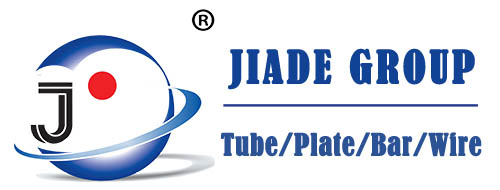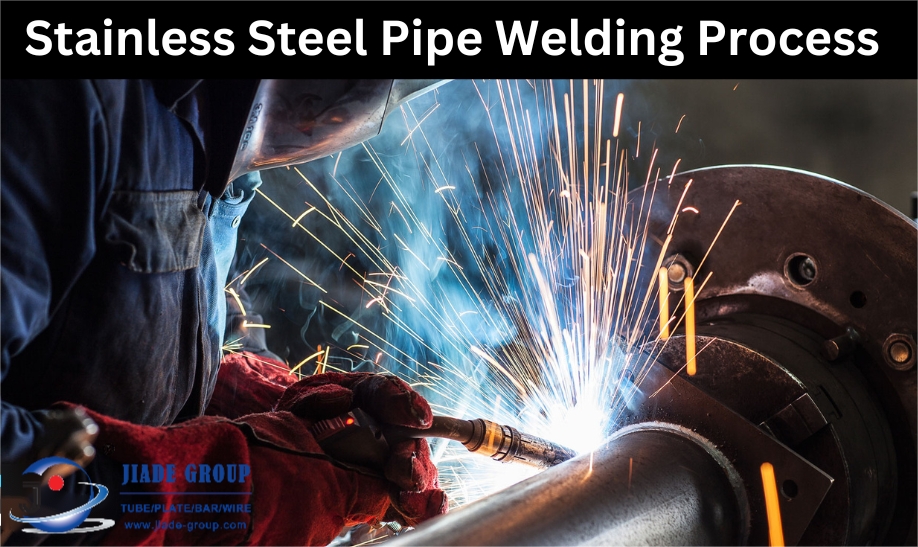316L stainless steel pipe welding process
316L stainless steel has good resistance to chloride erosion, so it is usually used in the marine environment. Stainless steel pipe with the development of social and economic development, its application has been more and more widely popularized. For the Qinhuangdao Port Authority Oil Terminal Pipeline Laying Project using 316L stainless steel pipeline with a total length of 1630m, about 280 welded joints are equal wall thickness pipe welding, according to the welding properties of the steel to select the performance of the welding material to match the performance of the steel. In accordance with the relevant technical requirements of the welding process test and evaluation, the welding process has been successfully applied to the construction site.
1. Test material
Base material and welding consumables: the base material is 316L seamless stainless steel pipe; specifications shall be quasi 159mm × 5mm. 316L seamless stainless steel pipe chemical composition and mechanical properties are shown in Table 1,2.
Table.1 316L seamless stainless steel pipe chemical composition (mass fraction) (%)
| Element | C | Si | Mn | P | S | Cr | Mo | Ni |
| Standard value | 50.03 | 51 | 52 | 50.045 | 50.03 | 16-18 | 2-3 | 13-17 |
| Actual measurement | 0.03 | 0.08 | 0.9 | 0.04 | 0.02 | 16.5 | 2.8 | 15.6 |
Table.2 Mechanical properties of 316L seamless stainless steel pipe
| Yield strength ReL/MPa | Tensile strength Rm/MPa | Elongation A (%) | Hardness HB | |
| Standard value | 2177 | 2480 | 240 | 5187 |
| Actual measurement | 185 | 486 | 45 | 167 |
2. Welding process characteristics of 316L stainless steel
As the thermal conductivity of 316L stainless steel is small and the coefficient of thermal expansion is large, it is easy to produce large deformation and welding stress when welding; therefore, the welding energy should be selected as far as possible to concentrate the welding method.
Due to the small thermal conductivity of austenitic stainless steel, in the same current, it can be compared to low alloy steel to get a larger depth of fusion. At the same time and because of its large resistivity, in electrode arc welding, in order to avoid reddening of the electrode, compared with the same diameter of carbon steel or low alloy steel electrodes, the welding current is smaller.
Regarding the selection of welding process parameters, generally smaller welding heat input is used for welding. When welding rod arc welding, it is appropriate to use small diameter welding rod, fast multi-pass welding, for the high requirements of the weld, and even the use of pouring cold water to accelerate the cooling method. Due to the large sensitivity to thermal cracking, it is more important to strictly control the welding heat input to prevent serious growth of weld grain and the occurrence of welding thermal cracking.
In order to improve the weld’s thermal crack resistance and corrosion resistance, welding pays special attention to the weld zone and prevents harmful elements from penetrating into the weld.
316L stainless steel welding generally does not require preheating. In order to prevent the weld and heat-affected zone grain growth and carbide precipitation, to ensure the plasticity, toughness, and corrosion resistance of welded joints, control the lower inter-channel temperature, generally not more than 150 ℃.
3. Welding process of 316L stainless steel pipe
316L stainless steel seamless steel pipe using electrode arc welding, tungsten argon arc welding 2 methods, bottoming filler using argon arc welding, filler, cover surface using electrode arc welding. Tungsten tungsten arc welding choose H00Cr19Ni12Mo2Cu2 wire, specifications: quasi 2.0 mm; electrode arc welding choose A022 electrode, specifications: filler welding quasi 2.0 mm, cover welding quasi 2.5 mm. H00Cr19Ni12Mo2Cu2 wire features smooth wire feeding, arc combustion stabilization, weld shaping, and spatter is very little; the mechanical properties of molten metal are Stable, and there is a high X-ray qualification rate. Excellent corrosion resistance, ultra-low carbon content, and high Mo content can prevent intergranular corrosion, no heat treatment after welding, high-temperature strength, and corrosion-resistant wire. Its chemical composition is shown in Table 3,4.
Table.3 H00Cr19Ni12Mo2Cu2 wire chemical composition (mass fraction) (%)
| C | Mn | Si | S | P | Cu | Cr | Mo | Ni |
| ≤
0.03 |
1.00-2.5 | ≤
0.6 |
≤
0.03 |
≤
0.03 |
1.00-2.5 | 18.00-20.00 | 2.00-3.00 | 11.00-14.00 |
Table.4 Chemical composition of A022 welding rod (mass fraction) (%)
| C | Mn | Si | S | P | Cu | Cr | Mo | Ni |
| ≤0.04 | 0.5-2.5 | ≤0.90 | ≤0.03 | ≤0.03 | ≤0.75 | 17.0-20 | 2.00-3.00 | 11.0-14.00 |
A022 electrode features: titanium calcium flux skin of ultra-low carbon stainless steel electrode, its molten metal w (C)≤ 0.04%, with good heat resistance, corrosion resistance and anti-cracking, anti-porosity properties, good operating process performance, good red resistance of the flux skin, good strength, can be AC and DC dual-use. They are used for welding petroleum pipelines, urea, synthetic fibers and other equipment and the same type of stainless steel structure.
Welding equipment: tungsten argon arc welding using a TIG400 type welding machine, electrode arc welding using a WSE-315 type welding machine.
4. Welding process parameters
316L stainless steel pipe welding, due to thermal cracking sensitivity, should strictly control the welding heat input to prevent the weld grain from serious growth and welding thermal cracking occurring (using a small welding heat input, as far as possible to use a short arc does not swing or small swing multi-layer multi-channel welding to reduce the degree of oxidation). Welding process: small current, fast welding, control inter-pass temperature is not higher than 80 ℃; the specific welding process parameters are shown in Table 5.
Table.5 Welding process parameters
| Welding method | Weld bead or weld layer | Arc voltage/V | Welding current/A | Welding speed/(cm.min-1) |
| Tungsten inert gas arc welding | Root welding | 12-15 | 70-80 | 8-10 |
| Welding rod arc welding | Filler welding | 15-25 | 80-90 | 8-10 |
| Welding rod arc welding | Cover welding | 15-25 | 85-95 | 9-12 |
Bevel form using a V-shaped bevel, the blunt edge of the bevel is smaller than the blunt edge of the bevel when welding carbon steel, about 1.5 mm, the bevel angle is larger than the carbon steel bevel angle, the form is shown in Figure 1.
Figure 1 Weld bevel form and size
Due to the viscous flow of stainless steel molten metal, the use of a larger bevel angle of 70 ° to prevent the occurrence of poor fusion phenomenon while reducing the fusion ratio in welding to ensure that the welding process parameters are stable to ensure that the stability of the weld composition; in order to ensure the quality of the root welding weld channel, the pipe must be filled with argon protection to ensure that the back of the single-side weld is well formed, and try to send the wire inward when welding to avoid the occurrence of the root of the inner concave.
- Weldment pairing: in order to prevent deformation or positioning, welds are oxidized, and spot solid welding should be welded as soon as possible after welding. Because the 316L stainless steel pipe thermal expansion coefficient is large, welding produces large welding stress and requires the use of strict three-point positioning welding, positioning weld length of 7-8 mm.
- Arc: in order to prevent the arc abrasion of the base material in the arc plate or weldments outside the arc. Arc combustion stabilization before formal welding and arc quenching must fill the arc pit. Using segmented welding, the specific segmentation method is shown in Figure 2. To avoid carbide precipitation sensitization and intergranular corrosion, while using this segmentation, symmetrical dispersion of the welding sequence can increase the cooling rate of the joints but also reduce the welding stress, effectively controlling the welding deformation.
Figure.2 316L stainless steel pipe segmented welding diagram
The welding process must control the following points:
- Connection method: DC reverse connection for electrode arc welding, DC positive connection for argon arc welding;
- Before welding, the welding rod should be preheated 200-250 ℃, insulated for 1h, and used as needed;
- Before welding the welding area and the workpiece bevel on both sides of the 35mm range of oil and other cleanup, and use acetone to clean the bevel on both sides of the 35mm range;
- In order to ensure that the back of the molding, welding the back of the argon gas-filled protection;
- Avoid spattering and arcing in parts other than the bevel;
- The surface of the weld is required to be smooth and clean, and the residue is thoroughly removed;
- The root of the weld should not be the remaining pads, locking edge to ensure weld penetration;
- The use of lower inter-channel temperature and water cooling can be used.
- The use of the back welding method and skip welding method.
5. Welding joint inspection
(1) Appearance check for good molding (no defects such as porosity, slag entrapment, depression, etc.).
(2) The test proves that the mechanical property index is good. Tensile strength, bending, and hardness test results are shown in Table 6.
Table.6 Mechanical properties test results
| Tensile strength Rm/MPa | Bending test d=4a, 180 ° | Hardness HB | Evaluation results | |||
| Sample 1 | Sample 2 | Sample 3 | Qualified | Heat Affected Zone | Welding seam | Qualified |
| 489 | 495 | 492 | 181 | 179 | ||
(3) Macroscopic metallographic examination, weld fusion is good, and the depth of fusion meets the requirements (about 1.2 mm). Microscopic metallographic examination, the weld metal is 95% austenite +5% ferrite organization, intergranular corrosion resistance requirements can be guaranteed, and the site construction to ensure the quality of welding works.
(4) In accordance with Q/SYXQ42003 “West-East Gas Pipeline Project Welding Construction and Acceptance Specification”, 100% weld flaw detection testing, fully automatic ultrasonic testing in line with the Q/SYXQ7-2002 “West-East Gas Pipeline Project Pipeline Butt Ring Weld Fully Automated Ultrasonic Detection,” the provisions of the one-time test pass rate of 93%, unqualified welds Rework, the grass-roots level using a grinding wheel to remove defects, weld repair according to the original test standard inspection, repair should not be more than 2 times, repair weld testing pass rate of 100%.
6. Conclusion
According to the 316L stainless steel material weldability analysis and relevant technical standards, and through the test demonstration, the development of a realistic welding process, the use of this process completed the pipeline laying project after nearly a few years of use of the pipeline did not happen to weld the problem, to solve the problem of welding, and at the same time also for peers in the encounter of similar problems to provide a reference.

